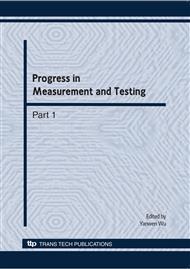p.1320
p.1326
p.1332
p.1338
p.1344
p.1348
p.1354
p.1360
p.1366
A Fast Algorithm for Road Recognition in Remote Sensing Image
Abstract:
In general, the road extraction methods in remote sensing images mainly are edge detection, feature integration, and so on. A fast road recognition arithmetic is presented in this paper. First using adaptive binarization arithmetic, the path on remote sensing images is extracted. Then morphological method is used to process image. Finally, the extracted image superimposed with the original and get clear road. Simulation results shows that this algorithm is efficiency, the anti-noise ability is enhance, and more precision.
Info:
Periodical:
Pages:
1344-1347
Citation:
Online since:
May 2010
Authors:
Price:
Сopyright:
© 2010 Trans Tech Publications Ltd. All Rights Reserved
Share:
Citation:


